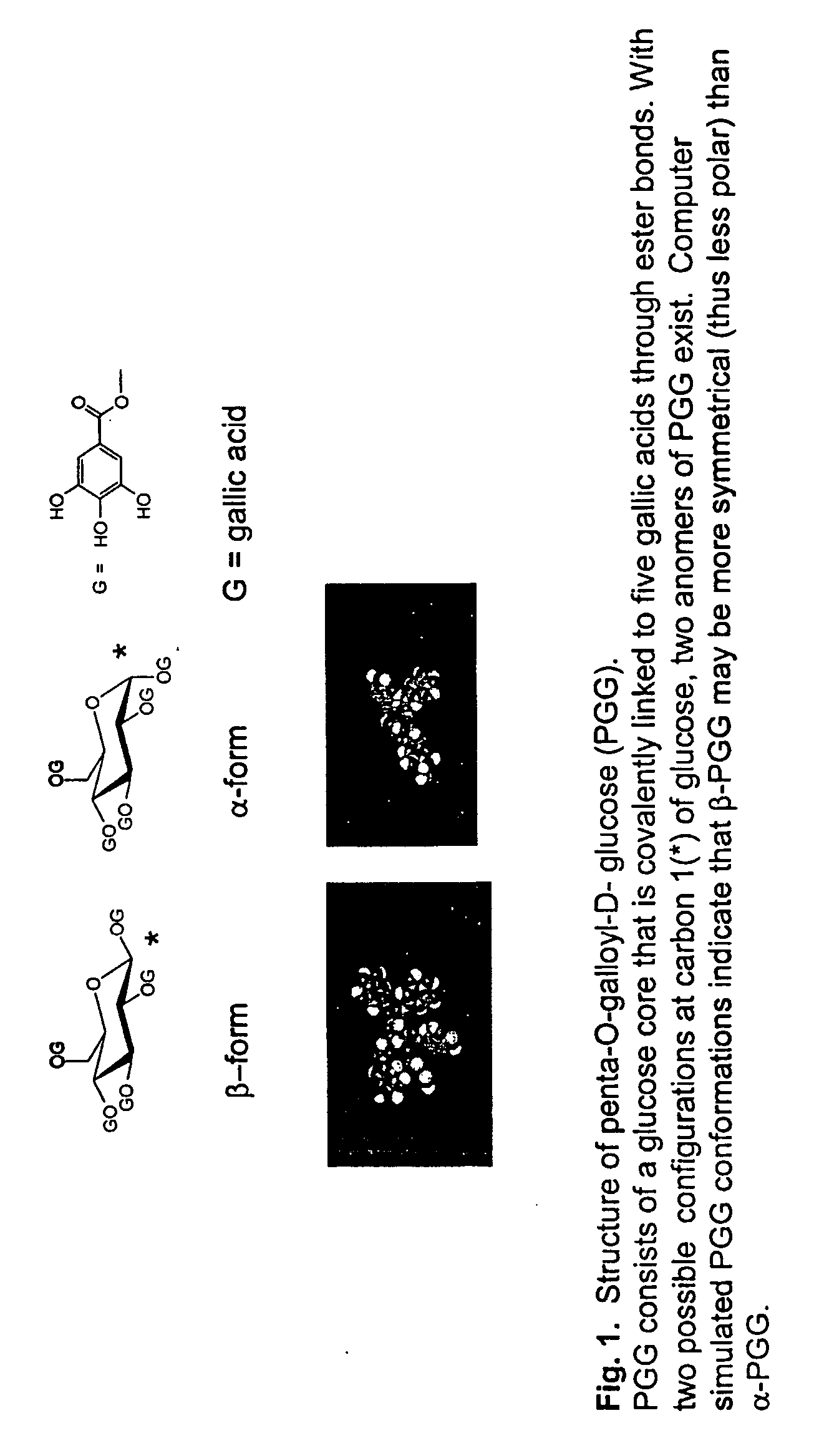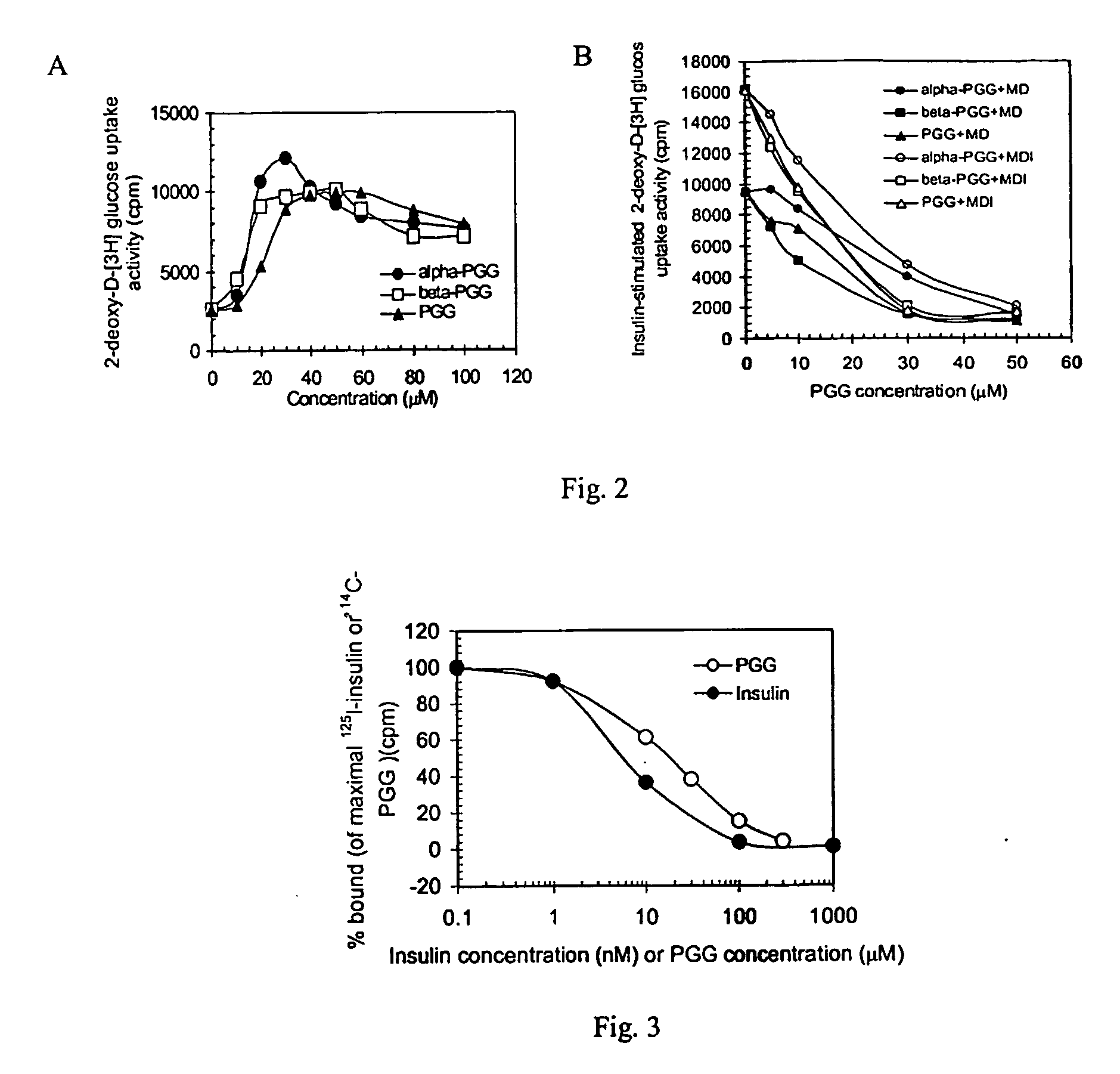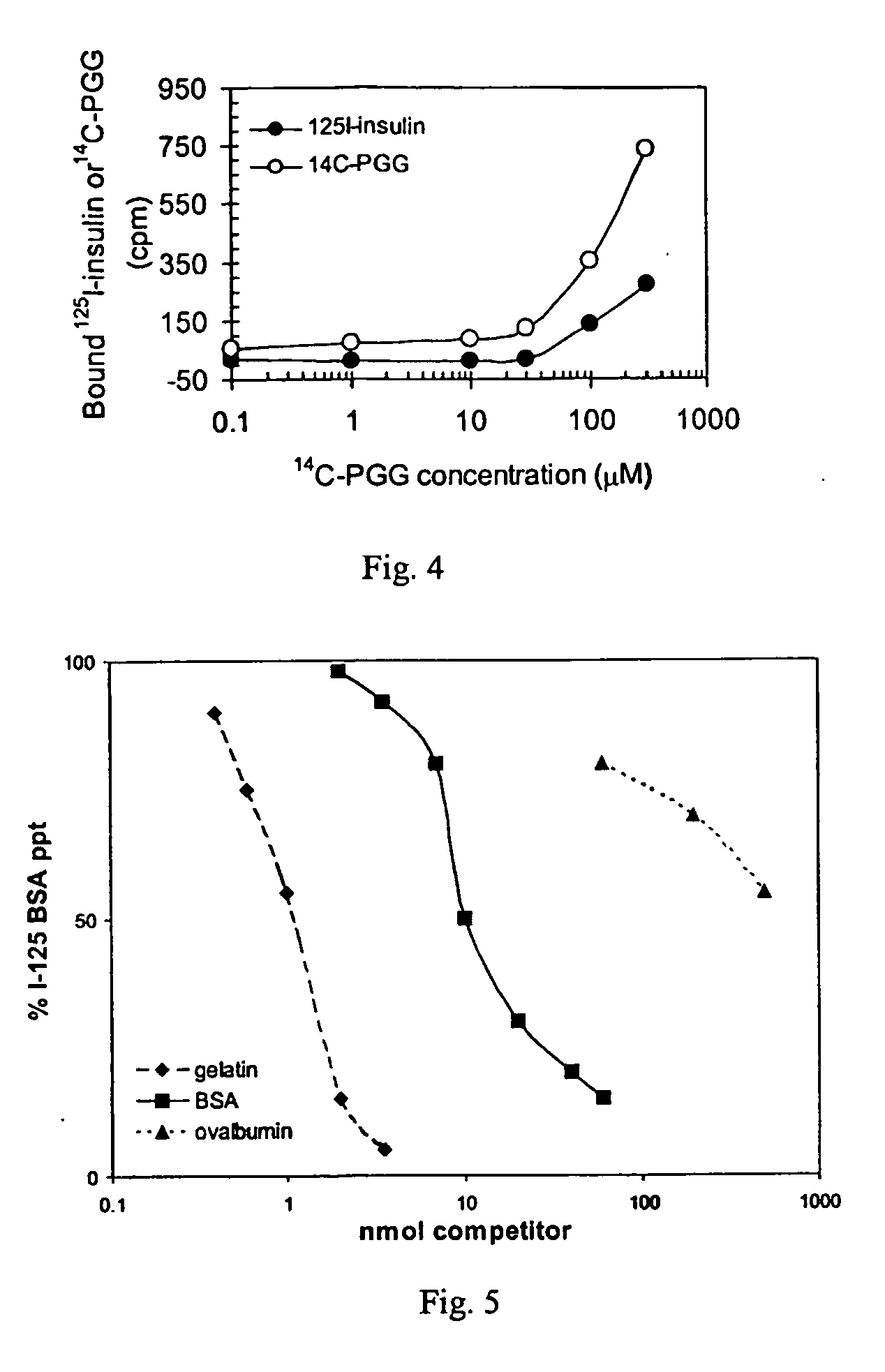Methods and compositions for treating diabetes mellitis
a technology of diabetes mellitis and compositions, applied in the field of methods and compositions for treating diabetes mellitis, can solve the problems of impaired glucose tolerance, increased and premature mortality, uncontrollable hyperglycemia,
- Summary
- Abstract
- Description
- Claims
- Application Information
AI Technical Summary
Benefits of technology
Problems solved by technology
Method used
Image
Examples
example 1
Stimulation of Glucose Uptake in Cells by Penta-O-Galloyl-D-Glucose (PGG)
[0123] A 50:50 mixture of α-PGG and β-PGG was synthesized as described above. The alpha and beta anomers were separated as described above. The glucose transport stimulatory activity of the two anomoers was compared to that of authentic plant derived β-PGG. Chemically synthesized PGG and authentic plant derived PGG are spectrally identical.
[0124] 3T3-L1 adipocytes were purchased from ATCC, and maintained and passed as preadipocytes in DMEM supplemented with 10% calf serum in a 37° C. incubator with 10% CO2 as required by the cells. The cells were induced to differentiate into adipocytes by addition of MDI induction cocktail as described in Liu, F., Kim, J., Li, Y., Liu, X., Li, J. & Chen, X. (2001) An extract of Lagerstroemia speciosa L. has insulin-like glucose uptake-stimulatory and adipocyte differentiation-inhibitory activities in 3T3-L1 cells. J. Nutrition 131:2242-224, which is specifically incorporated...
example 2
Effect of PGG on Adipogenesis
[0130] 3T3-L1 adipocytes were purchased from ATCC, and maintained and passed as preadipocytes in DMEM supplemented with 10% calf serum in a 37° C. incubator with 10% CO2 as required by the cells. To test the effect of PGG on adipogenesis, the preadipocytes were incubated either with a differentiation-induction cocktail comprised of 3-isobutyl-1-methylxanthine, dexamethasone(MDI), a cocktail comprised of 3-isobutyl-1-methylxanthine, dexamethasone (MD) and PGG; or with MDI plus PGG. When insulin in MDI was substituted by PGG, the new cocktail failed to induce differentiation of the preadipocytes. (See FIG. 2 B.) These results indicate that PGG cannot replace insulin for induction differentiation of pre-adipocytes to adipocytes.
[0131] A cell proliferation assay was used to determine if PGG inhibits adipocyte differentiation by blocking clonal expansion. The assay indicated that the first round of clonal expansion is not inhibited by either α- or β-PGG. Th...
example 3
Effect on PGG on Reducing Blood Glucose Levels in Diabetic Animals
[0134] To determine whether α-PGG could exhibit anti-diabetic activities in vivo, α-PGG in the form of an aqueous solution was orally delivered to 8-week old male fasting diabetic db / db mice. It was found that a single dose of α-PGG at a concentration of 25 mg / kg body weight significantly reduced the blood glucose levels in db / db mice compared to the db / db mice received vehicle (same aqueous solution without α-PGG) (FIG. 11A). The reduction of the glucose level is about 15-20% depending on the time post α-pGG administration (P<0.01, FIG. 11A).
[0135] To determine if α-PGG is also effective in improving glucose tolerance in diabetic and obese mice, a glucose tolerance test was performed using ob / ob mice. Glucose or glucose plus α-PGG were orally delivered into male ob / ob mice, and blood glucose levels were measured at various times post glucose / PGG administration. The ob / ob mice receiving glucose plus α-PGG have signi...
PUM
| Property | Measurement | Unit |
|---|---|---|
| Percent by mass | aaaaa | aaaaa |
| Percent by mass | aaaaa | aaaaa |
| Structure | aaaaa | aaaaa |
Abstract
Description
Claims
Application Information
 Login to View More
Login to View More - R&D
- Intellectual Property
- Life Sciences
- Materials
- Tech Scout
- Unparalleled Data Quality
- Higher Quality Content
- 60% Fewer Hallucinations
Browse by: Latest US Patents, China's latest patents, Technical Efficacy Thesaurus, Application Domain, Technology Topic, Popular Technical Reports.
© 2025 PatSnap. All rights reserved.Legal|Privacy policy|Modern Slavery Act Transparency Statement|Sitemap|About US| Contact US: help@patsnap.com



